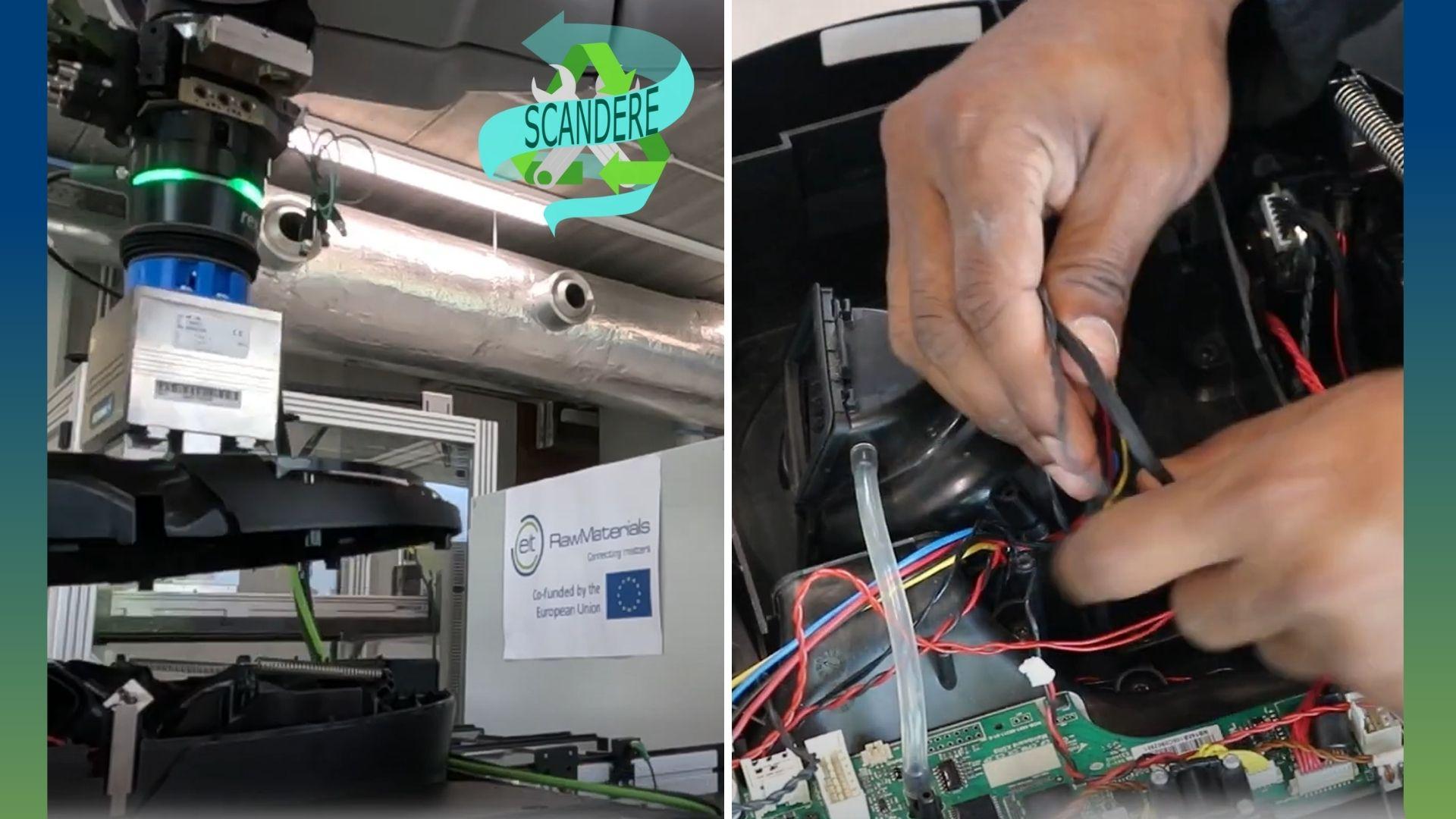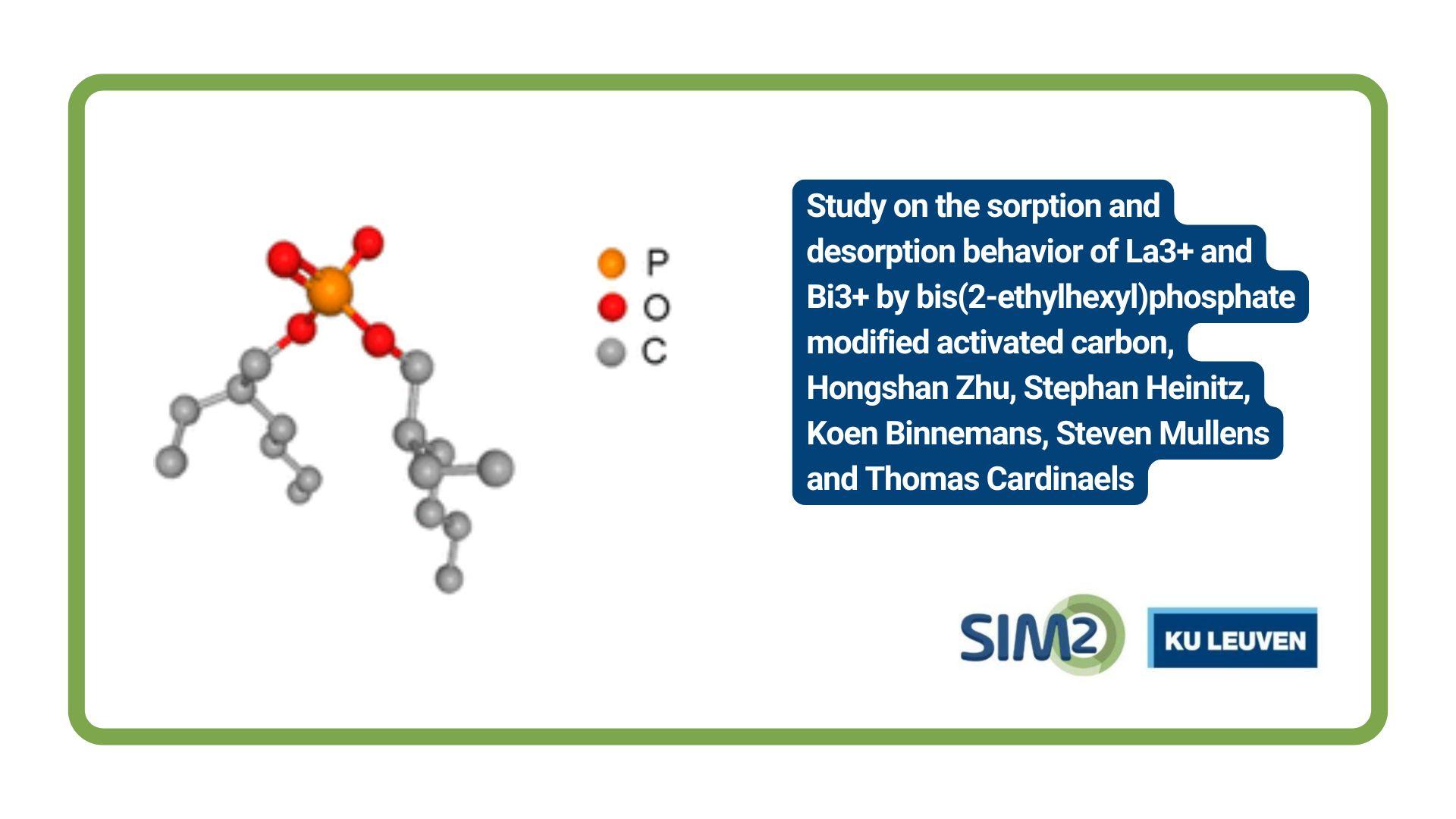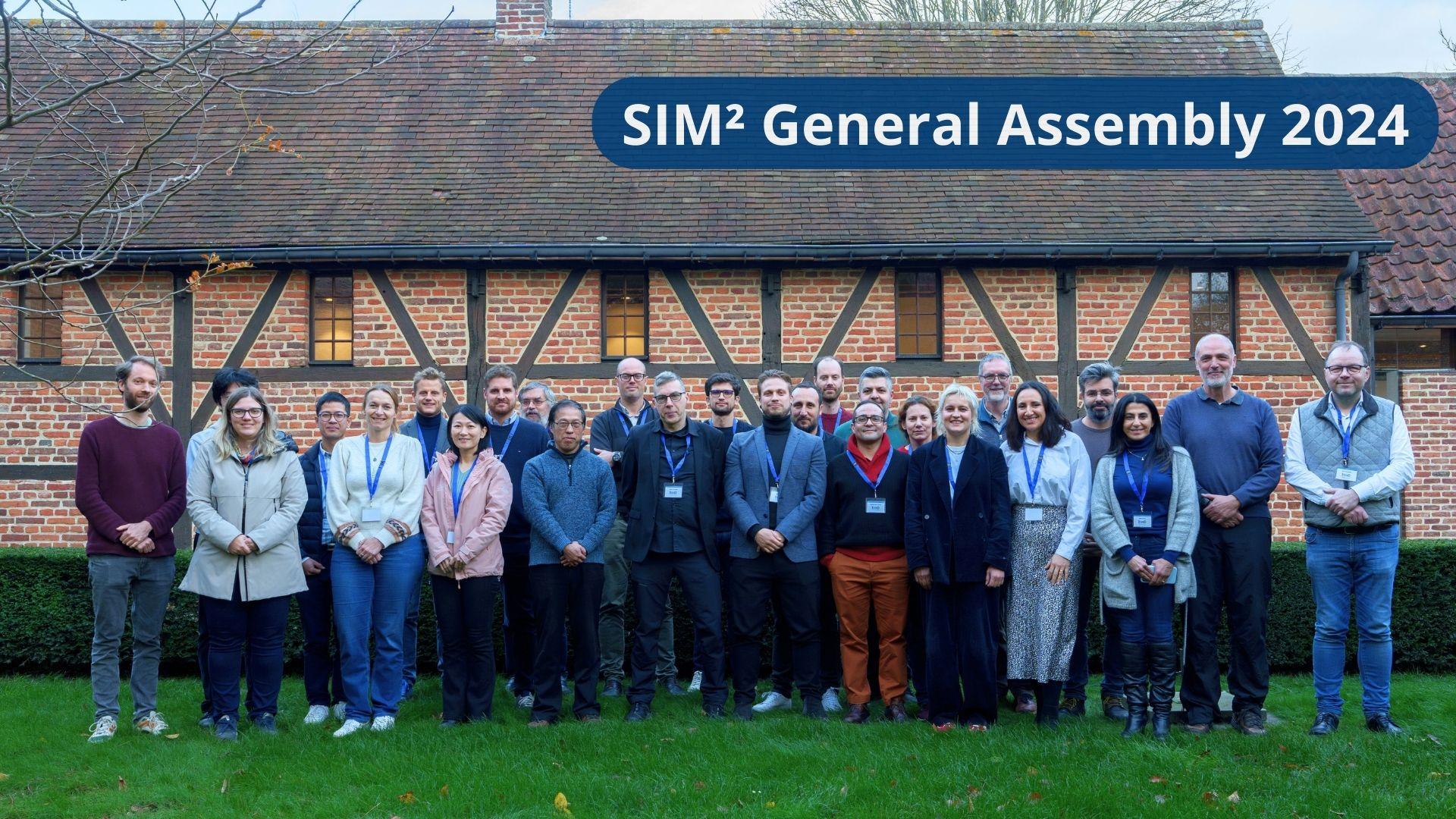ProcESS/SIM² KU Leuven researchers investigated the optimal design of translucent photocatalytic structures for the development of small and large-scale photocatalytic reactors. These reactors can be used for medicinal drug synthesis or wastewater treatment. They altered the base element size of the structure which impacts the packing parameters. Decreasing the base element size increases the available surface area which increases the potential illuminated catalyst load per volume. However, a smaller base element increases the number of light scattering boundaries, resulting in a higher energy loss. The varied parameters are the base structure size, light intensity and catalyst load. The base structure used in this work is a borosilicate glass sphere with a diameter of 1 mm, 2 mm or 3 mm. Playing with these parameters allows to flexibly design an optimal configuration. The work was published in Chemical Engineering Journal.
Evaluating light absorption, and external mass transfer properties
To assess the absorption efficiency, a two-flux light model was validated and used. A two-flux light model describes light as a bundle rays which can only propagate forward or backward. It was shown that, for the same catalyst load, 1 mm beads absorb less energy than 2 and 3 mm beads (figure 1).
This is because decreasing the bead size, increases the available illuminated surface area resulting in a decrease of the catalyst layer thickness since it is spread over a larger bead surface. Subsequently, the number of boundaries at which light rays can scatter increases leading to more energy being scattered out of the reactor.
Furthermore, for equal rates of energy absorption, the spheres with a diameter of 1 and 2 mm behave equally while the 3 mm spheres show a lower bed activity. This is partly attributed to mass transport resistances towards the catalytic surface. Increasing the surface area enhances the absolute mass transport towards the catalytic surface.
These observations imply that there is an optimisation problem which tempts to maximise energy absorption and minimise mass transport limitations. With this information, the researchers were able to define some general design guidelines.
Setting up a design strategy
A design procedure is shown in figure 2, where a strategy is presented which can be followed designing a cross-current illuminated (illumination direction parallel to the flow direction) photocatalytic packed bed reactor.
Firstly, the optical properties of the catalyst are measured with which the transmission of a single layer can be calculated to estimate the layer thickness at which all the energy would be absorbed. Taking into account the reactor thickness to particle diameter ratio and mass transfer properties of the different base structure sizes, the number of layers (N), particle size (dp) and layer thickness (![]() ) can be determined. The layer thickness can be estimated by dividing the layer thickness where all the energy is absorbed by 2 N. Subsequently, a light model can be used to estimate the light transmission through the reactor and the total energy absorption of the catalyst.
) can be determined. The layer thickness can be estimated by dividing the layer thickness where all the energy is absorbed by 2 N. Subsequently, a light model can be used to estimate the light transmission through the reactor and the total energy absorption of the catalyst.
The authors give pre-calculated figures with which this estimation can be performed. If the transmission is too large, the number of layers or the layer thickness can be increased. If the transmission is too low, even when using very thin layers, the structural parameters can be changed to a lower reactor thickness to particle size ratio.
Secondly, after determining the bed parameters, the reactor can be designed. In the experimental phase, the transmission can be experimentally measured, to reassess the estimated energy absorption. The effect of external mass transfer can be assessed using the fitted parameters from section, where it is shown that an increased surface area maximises the packed bed performance.
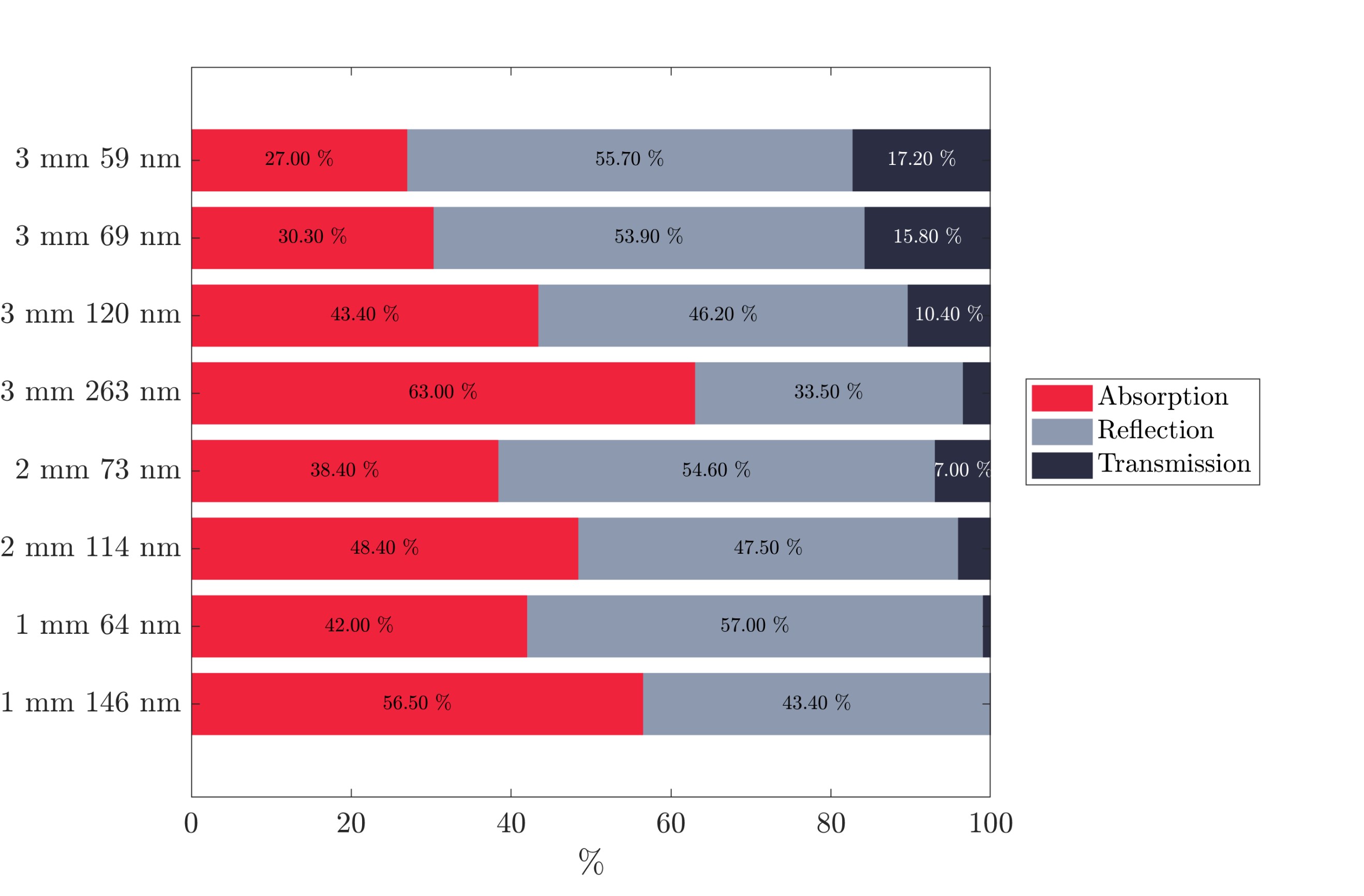
Figure 1: The percentage of incoming light energy that is absorbed, reflected and transmitted for the different setups. The incoming power in the reactor is equal to 1.38 W.
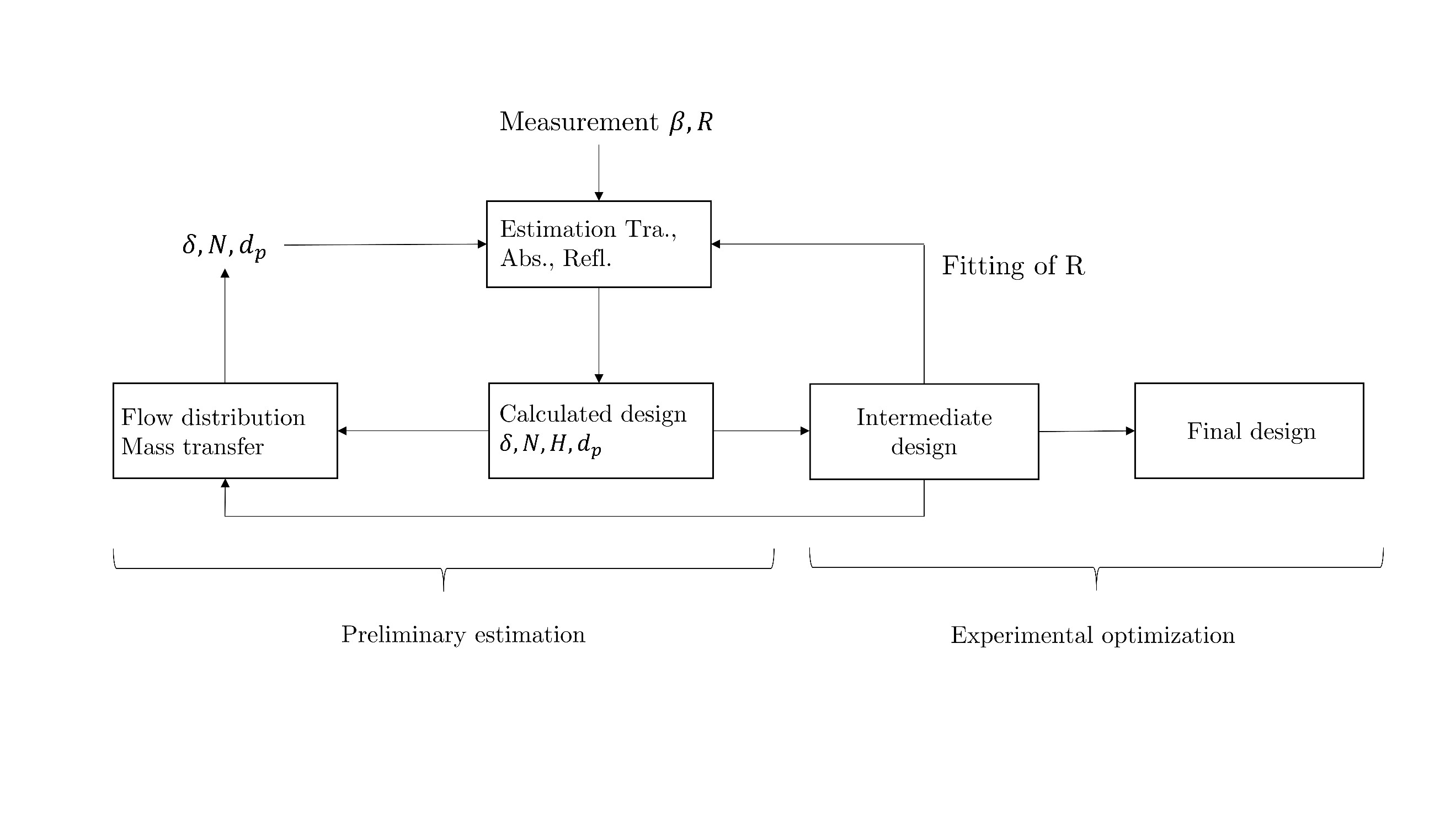
Figure 2: Scheme for the design of photocatalytic packed bed reactors for pollutant degradation
Full reference paper
T. Claes, T. Van Gerven, M.E. Leblebici, Design considerations for photocatalytic structured packed bed reactors, Chem. Eng. J., 403 (2021), p. 126355, DOI: 10.1016/j.cej.2020.126355
Find out more about the work being performed in the ProCESS Group through this interview with Prof. Tom Van Gerven:
"With process intensification we study the engineering surrounding the chemical reaction itself. This means we are looking to reduce transfer limitations of mass, heat and momentum (mixing), and find better ways of activating chemical reactions. We develop reactor and separation systems that are more efficient in terms of material or energy usage."


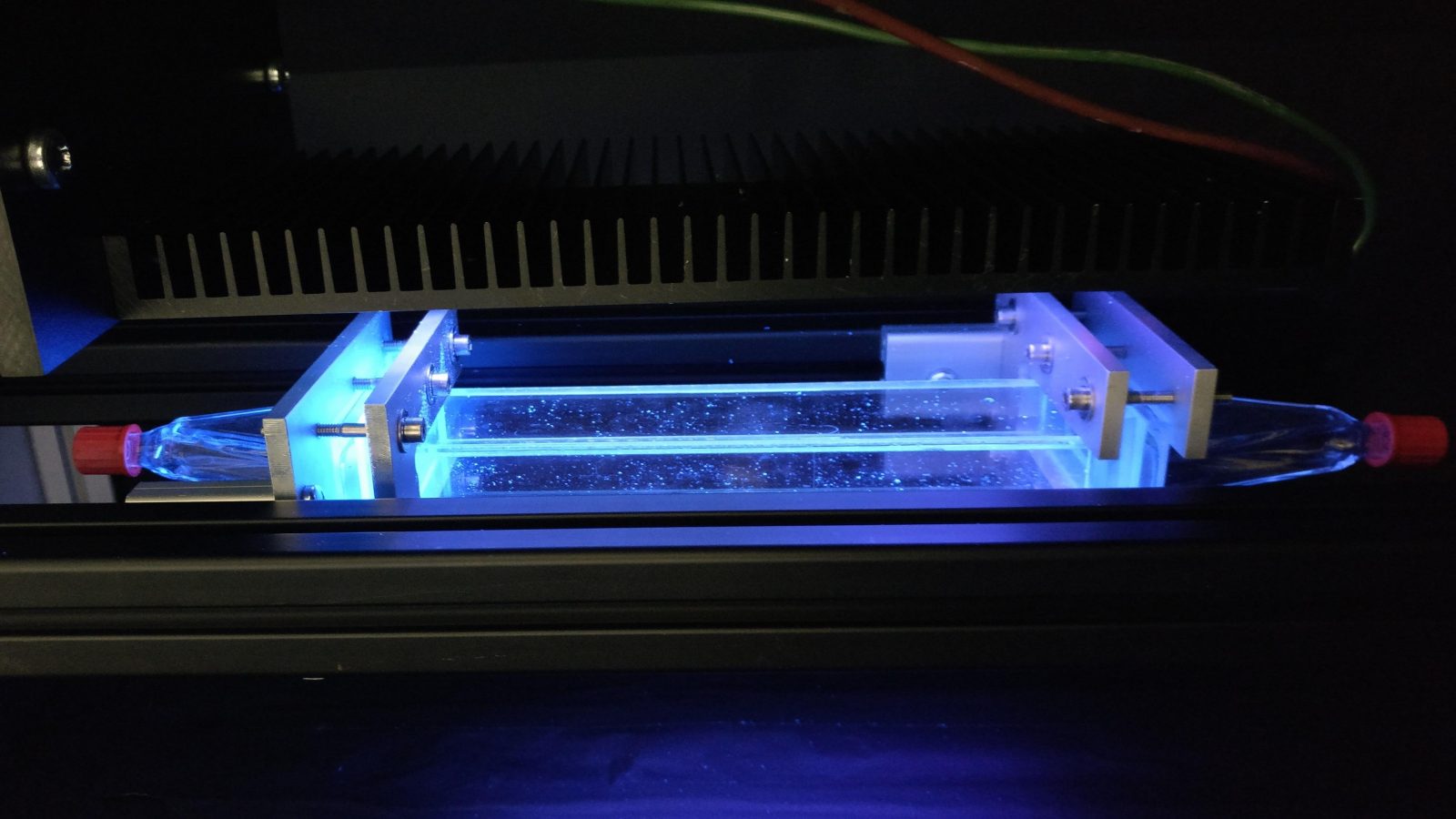
.jpg)
